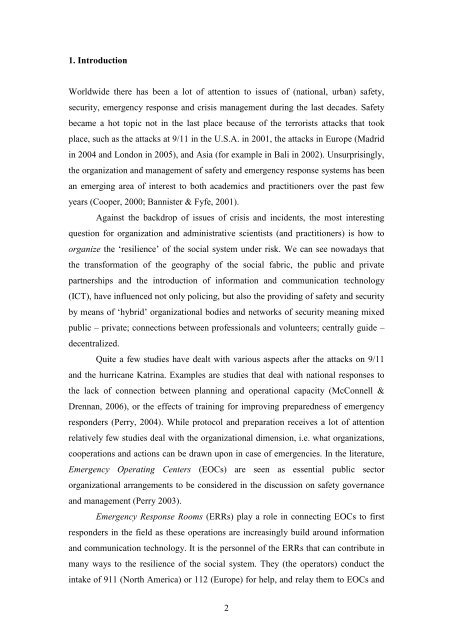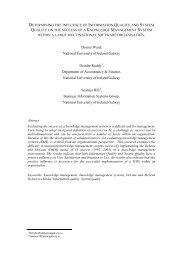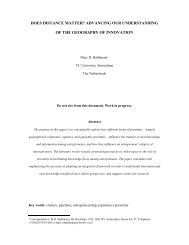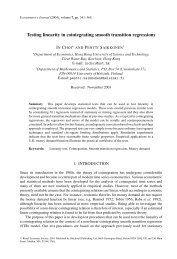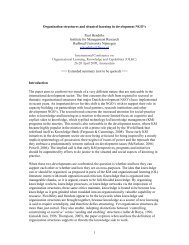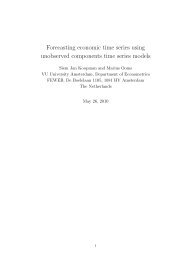Kees Boersma; Peter Groenewegen
Kees Boersma; Peter Groenewegen
Kees Boersma; Peter Groenewegen
You also want an ePaper? Increase the reach of your titles
YUMPU automatically turns print PDFs into web optimized ePapers that Google loves.
1. Introduction<br />
Worldwide there has been a lot of attention to issues of (national, urban) safety,<br />
security, emergency response and crisis management during the last decades. Safety<br />
became a hot topic not in the last place because of the terrorists attacks that took<br />
place, such as the attacks at 9/11 in the U.S.A. in 2001, the attacks in Europe (Madrid<br />
in 2004 and London in 2005), and Asia (for example in Bali in 2002). Unsurprisingly,<br />
the organization and management of safety and emergency response systems has been<br />
an emerging area of interest to both academics and practitioners over the past few<br />
years (Cooper, 2000; Bannister & Fyfe, 2001).<br />
Against the backdrop of issues of crisis and incidents, the most interesting<br />
question for organization and administrative scientists (and practitioners) is how to<br />
organize the „resilience‟ of the social system under risk. We can see nowadays that<br />
the transformation of the geography of the social fabric, the public and private<br />
partnerships and the introduction of information and communication technology<br />
(ICT), have influenced not only policing, but also the providing of safety and security<br />
by means of „hybrid‟ organizational bodies and networks of security meaning mixed<br />
public – private; connections between professionals and volunteers; centrally guide –<br />
decentralized.<br />
Quite a few studies have dealt with various aspects after the attacks on 9/11<br />
and the hurricane Katrina. Examples are studies that deal with national responses to<br />
the lack of connection between planning and operational capacity (McConnell &<br />
Drennan, 2006), or the effects of training for improving preparedness of emergency<br />
responders (Perry, 2004). While protocol and preparation receives a lot of attention<br />
relatively few studies deal with the organizational dimension, i.e. what organizations,<br />
cooperations and actions can be drawn upon in case of emergencies. In the literature,<br />
Emergency Operating Centers (EOCs) are seen as essential public sector<br />
organizational arrangements to be considered in the discussion on safety governance<br />
and management (Perry 2003).<br />
Emergency Response Rooms (ERRs) play a role in connecting EOCs to first<br />
responders in the field as these operations are increasingly build around information<br />
and communication technology. It is the personnel of the ERRs that can contribute in<br />
many ways to the resilience of the social system. They (the operators) conduct the<br />
intake of 911 (North America) or 112 (Europe) for help, and relay them to EOCs and<br />
2


